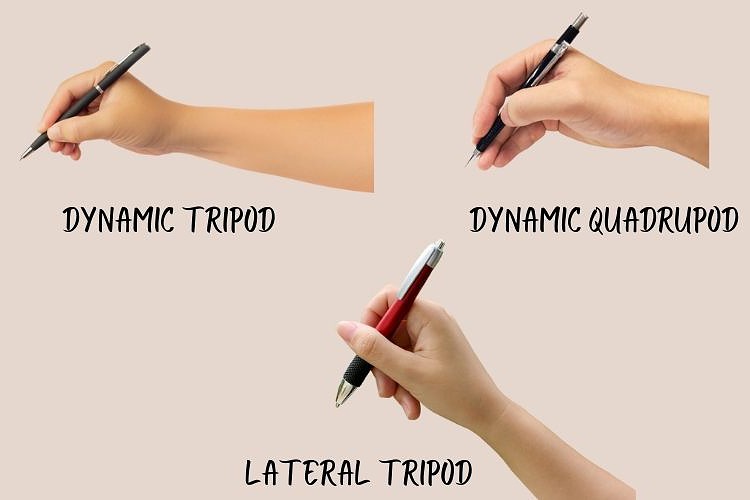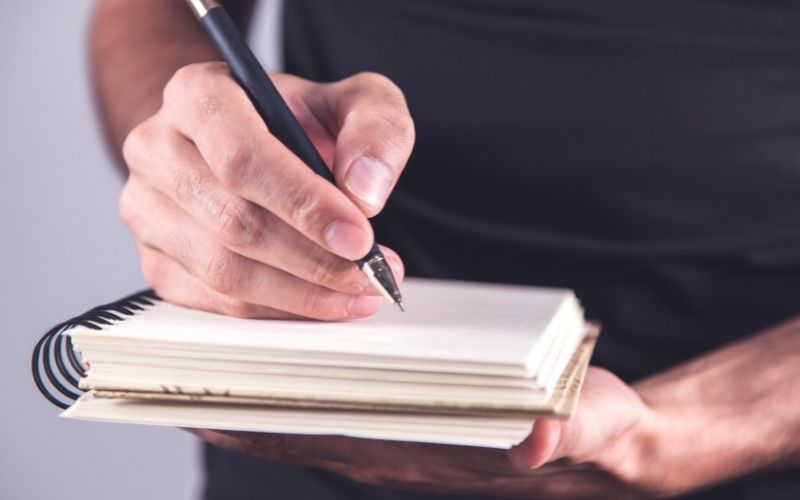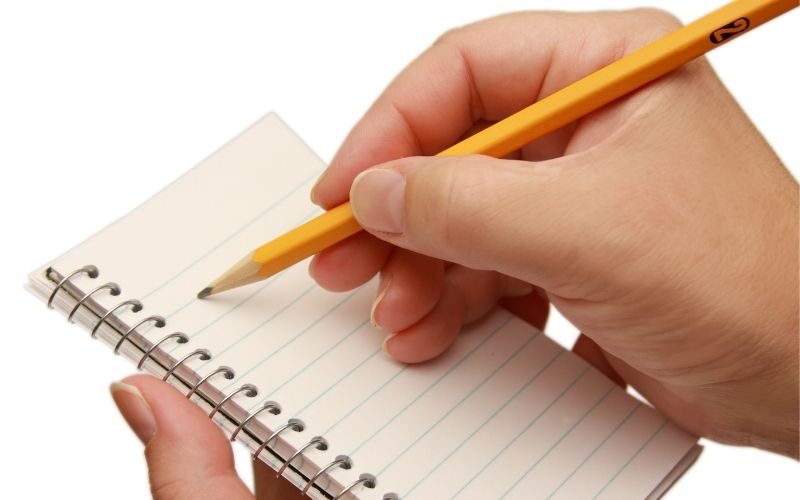Have you ever felt your hands cramp up after a long session of writing? Incorrect pen grasp can result in hand and arm pain or fatigue.
We won’t go as far as to say that there’s a right way of holding a pen, but studies by Dr. Hideli Oshiki and calligrapher Rosemary Sassoon found that there’s an ergonomic way to hold a pen.
This method is called the modified tripod grasp, reducing fatigue and muscle stress in your palm and fingers. It also increases comfort and legibility of your penmanship.
With the modified tripod grasp, the pen is held between the index finger and the middle finger, rather than between your index finger and thumb. The fingers are then comfortably secured around the pen.
When learning to hold a pen in the most ergonomic way, remember that it’s critical to start with the proper posture and sitting position.
In this article, learn how to use the most ergonomic way to hold a pen –– the modified tripod grasp.
Table of Contents
What Are the Ways to Hold a Pen?

Most people will be familiar with these four pen grips:
- Lateral tripod
- Dynamic tripod
- Lateral quadrupod
- Dynamic quadrupod
Tripod and quadrupod refer to whether your pen rests on your middle finger or your ring finger, while lateral and dynamic refer to whether you rest your thumb on the index finger or not.
Among these four pen grips, the dynamic tripod is considered to be the most ergonomic since it uses the least amount of muscle effort which helps to speed up writing.
However, research has shown that although lesser known today, the modified tripod grasp has been used by older painters and artists as an ergonomic way to hold brushes.
Other renowned icons that use this grip are Anne Frank and Taylor Swift.
According to Taylor Swift, she had to switch to this more ergonomic grip after signing thousands of autographs.
How Important Is Pen Grip?

When you hold a pen or pencil properly, the writer will move their hand more efficiently.
An ergonomic pen grip will also allow better control of the writing instrument.
On the other hand, incorrect pen grip will result in torsion of the wrists, fatigue, cramps, and pain in the palm and fingers.
This will ultimately affect the productivity and quality of writing outputs of office workers and students.
Even worse, it can result in musculoskeletal injuries, arthritis, and nerve damage.
What Is the Most Ergonomic Way to Hold a Pen?
The modified or alternative tripod grasp is a less popular way to hold a pen, but it’s highly effective for reducing fatigue.
While the modified tripod grasp may feel strange at first, continue practicing this method as an ergonomic way to hold a pen.
Modified tripod grasp is especially beneficial for people who experience hand fatigue due to low muscle tone It also prevents deformities associated with rheumatoid arthritis (ulnar drift).
Step 1: Start with Your Posture and Sitting Position
Remember that your posture and sitting position affect how you use your arms and hands. Having the correct posture and sitting position is the foundation for holding your pen ergonomically.

To maximize the benefits of the ergonomic pen grasp, make sure that you’re seated comfortably, with your feet flat on the ground.
Keep your trunk and shoulders relaxed and avoid slouching over your desk which will strain your back and neck.
Rest your forearms gently on the desk or surface to avoid contact stress. Your non-writing hand should also be on top of the table. It can rest on the surface or hold the paper or notebook.
If you hold the pen too tight or press down on the paper too hard, your hand will start to cramp. Avoid leaning heavily on your forearm and keep your elbows open at a 90-degree angle or more. The more your elbow bends, the more strain you’ll feel while writing.
A good ergonomic chair can do wonders for helping you achieve the correct posture and sitting position.

We recommend either Herman Miller or Steelcase chairs because they’re incredibly adjustable. Try to look for a model with adjustable seat height and seat depth, lumbar support, padded armrests, and a headrest.
If you don’t have the budget for an ergonomic office chair, a seat cushion or a lumbar support pillow will also improve your posture.
Getting a height-adjustable desk is also a great solution for shared office spaces. Workers can adjust the desk height to fit their specific needs.
Step 2: Gripping the Pen
Place the pen between your middle finger and index finger. To hold your pen ergonomically. Gently curl your fingers around the pen.
Again, this method is called the modified tripod grasp.
The standard way to hold a pen is between the thumb and index finger, so the modified tripod grasp will take some getting used to.
Remember that your fingers and knuckles should stay relaxed. Avoid using your fingers when moving the pen, instead use your wrist and forearm.
You can use your non-writing hand to reorient your paper while writing. This will help keep your wrist relaxed.
Step 3: Pace Your Writing
To achieve an ergonomic pen grip, it’s also critical that you write at a reasonable pace and take frequent breaks.

Writing in large cursive and using gel pens, fountain pens, or rollerballs instead of ballpoint pens will also help you write more ergonomically.
The PenAgain is an ergonomically-designed pen that uses the modified tripod grip.
The wishbone-shaped pen allows the hand to relax, making it an ideal tool for those with carpal tunnel syndrome, arthritis, repetitive stress injuries, Parkinson’s, and more.
Conclusion
You’ll be surprised to know that 90% of people hold their pen in an inefficient way.
The most ergonomic way to hold a pen is the modified tripod grasp, where the pen rests between the middle finger and index finger.
To achieve this ergonomic writing style, proper posture and sitting position and taking frequent writing breaks are critical.

My name is Vance, and I am the owner of To Ergonomics. Our mission is to improve your workflow by helping you create a supportive and welcoming environment. We hope that you’ll find what you’re looking for while you’re here.

